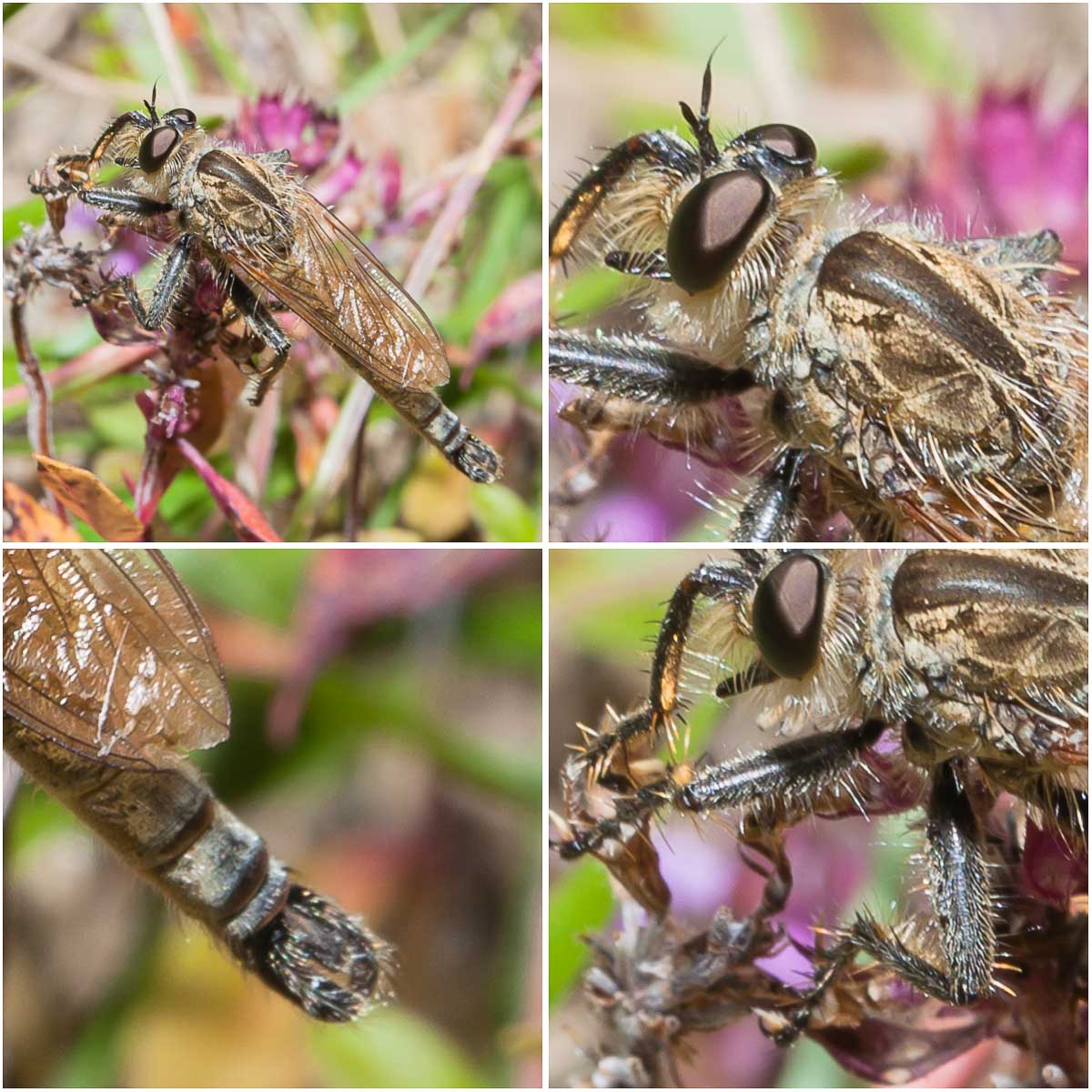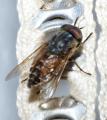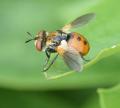Diptera.info :: Family forums :: Asilidae Forum
Who is here? 1 guest(s)
|
Didysmachus spec. ?
|
|
| Markus |
Posted on 27-08-2016 07:32
|
|
Member Location: Berlin Posts: 30 Joined: 11.07.16 |
I guess it is Didysmachus spec. ... Found it in semi-dry grasslands area: https://www.googl...a=!3m1!1e3, on 23/08/2016. Thank you for watching the photos and for your help. Markus attached the following image:  [170.54Kb] Edited by Markus on 27-08-2016 07:33 |
|
|
|
| Quaedfliegh |
Posted on 28-08-2016 14:22
|
|
Member Location: Tilburg Netherlands Posts: 2198 Joined: 18.05.10 |
This is a Machimus species, it looks a lot like M. cf rusticus.
Greetings, Reinoud Field guide to the robber flies of the Netherlands and Belgium: https://www.jeugdbondsuitgeverij.nl/product/field-guide-to-the-robberflies-of-the-netherlands-and-belgium/ https://www.nev.nl/diptera/ |
| Markus |
Posted on 28-08-2016 17:40
|
|
Member Location: Berlin Posts: 30 Joined: 11.07.16 |
Thank you much. I will try to learn why Machimus spec. and not Didysmachus spec.. Robberflies are really new to me. I saw those difficult keys. |
|
|
|
| Quaedfliegh |
Posted on 29-08-2016 10:38
|
|
Member Location: Tilburg Netherlands Posts: 2198 Joined: 18.05.10 |
When they are new to you it is hard to determine the genus and ID the fly...The way the genitalia are built plays an important part. Often you will need a female to establish the genus and a male to establish the species. Strictly speaking it is impossible to ID such flies from a picture. However, the number of genera (and species) is relatively low in this part of Europe. If your picture had been taken in southern Spain i wouldn't be so sure it was a Machimus sp. : )))) With some experience you will be able to eliminate most species and are left (in this case) with a Machimus sp. Than you can look at some details like the shape of the genitalia, colour of legs and bristles etc. This way i end up with cf rusticus. Why not Didysmachus? Because that genus has only one species (picipes) with a very tipicical shaped hypopygium. DC wil run along the entire length of the mesonotum, there are more differences........enjoy your study : )
Greetings, Reinoud Field guide to the robber flies of the Netherlands and Belgium: https://www.jeugdbondsuitgeverij.nl/product/field-guide-to-the-robberflies-of-the-netherlands-and-belgium/ https://www.nev.nl/diptera/ |
| Markus |
Posted on 30-08-2016 07:22
|
|
Member Location: Berlin Posts: 30 Joined: 11.07.16 |
Thank you very much for these details. I’ve found the link "Art auswählen" on http://www.asilidae.de that leads to 81 known robberflies species in Germany. I saw the key on http://www.robberflies.info. But these type of keys are focussing so much on morphology. Would be helpful if it were possible to eliminate sets of genus or species as a first step - as you described it - on the basis of known details like habitat, mode of behavior, season, region where the animal was found, plants and other animals found there a.s.o.. The next step could be to compare photos of the remaining species with details about their commonness. But i guess there is only insufficient data and knowledge available about things like mode of behavior, flight season, details about the habitat. |
|
|
|
| Quaedfliegh |
Posted on 30-08-2016 21:00
|
|
Member Location: Tilburg Netherlands Posts: 2198 Joined: 18.05.10 |
Danny Wolff's site gives a lot of that kind information. Habitat, flight period etc. It is very useful.... it also shows that your specimen is very late : ) M rusticus is known to be a fly from warm dry grasslands, in NL it is only known from the southern calcareous grasslands. I don't think it is entirely what you are looking for but, together with André Schulten, i made an online photo guide which contains as much info on behaviour, habitat, flightperiod...in as little text as possible (in Dutch):http://waarneming.nl/download/fotogidsAsilidae.pdf A next step might be a matrix key including habitat etc....
Greetings, Reinoud Field guide to the robber flies of the Netherlands and Belgium: https://www.jeugdbondsuitgeverij.nl/product/field-guide-to-the-robberflies-of-the-netherlands-and-belgium/ https://www.nev.nl/diptera/ |
| Markus |
Posted on 02-09-2016 06:00
|
|
Member Location: Berlin Posts: 30 Joined: 11.07.16 |
Hi Reinoud, fotogidsAsilidae.pdf is great, with perfect photography. Thanks for the link! I'm sorry to say, but many of the animals look quite similar - grey brown mixture and some of them with lightly yellow/red legs - at least to me as an amateur in robberflies :-/. But the guide also helps me to improve my Dutch proficiency, i learned Machimus rusticus is "zeer zeldzaam" in the North :-) (i think this is true for the South too) - Markus |
|
|
|
| Jump to Forum: |














 but don't see the image in the post.
but don't see the image in the post.
